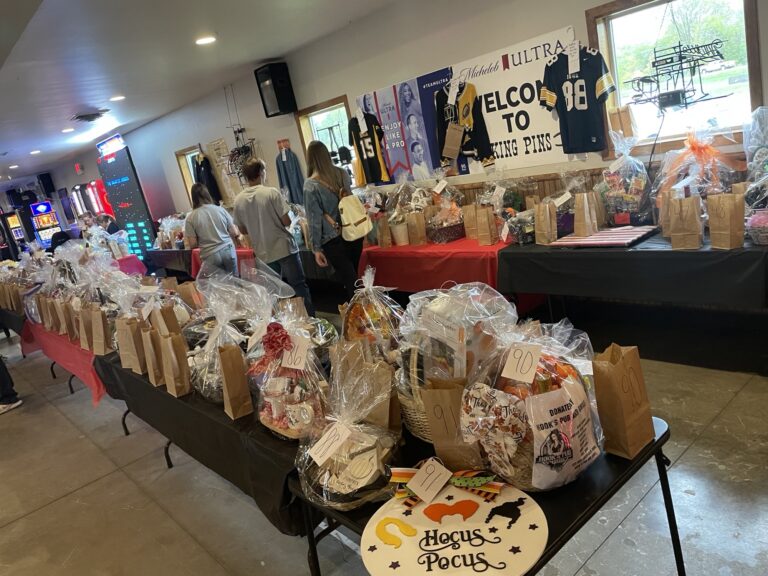Mastering Volunteer Management for Successful Benefit Fundraisers
Have you ever volunteered at a benefit fundraiser before and felt overwhelmed by the task of managing volunteers? As someone who has been in that position, I can understand how daunting it can be to ensure that everyone is on the same page and working towards the same goal. That’s why I’ve put together these benefit fundraiser volunteer management strategies and tips to help make the process easier for you.
So, what’s the answer to the problem of managing volunteers at a benefit fundraiser? The key is to have a solid plan in place before the event even starts. This includes recruiting a volunteer coordinator to oversee the volunteer team, creating a clear job description for each volunteer position, and establishing regular communication channels to ensure everyone is up-to-date on any changes or updates. Additionally, it’s important to provide proper training and support for volunteers to ensure they feel confident and capable in their roles. By following these strategies, you’ll be well on your way to successful volunteer management at your next benefit fundraiser.

Volunteer Management Recruiting and training for a benefit fundraiser
Recruiting and training volunteers for a benefit fundraiser can seem daunting, but it doesn’t have to be. To effectively recruit volunteers, it’s important to clearly define the roles and responsibilities of each position, so volunteers know what they are signing up for. Additionally, creating a training program to educate volunteers about the fundraiser’s mission and goals can help them understand the importance of their contributions. It’s also crucial to set expectations and provide clear communication channels for volunteers to ensure everyone is on the same page. Finally, be sure to show appreciation and value for volunteers’ time and effort to encourage their continued involvement.
- Define the roles and responsibilities of each volunteer position
- Create a training program to educate volunteers about the fundraiser’s mission and goals
- Set expectations and provide clear communication channels for volunteers
- Ensure volunteers feel valued and appreciated for their contributions

How do I manage volunteer schedules and ensure everyone is working efficiently?
Managing volunteer schedules can be a challenging task, but utilizing online tools to schedule and communicate with volunteers can help streamline the process. Additionally, implementing a system for tracking volunteer hours and performance can help identify areas where improvements can be made. Encouraging volunteers to provide feedback on their experience can also help improve future events. Finally, it’s important to stay flexible and adapt to any unexpected changes or challenges that may arise during the event to ensure everyone is working efficiently.
- Utilize online tools to schedule and communicate with volunteers
- Implement a system for tracking volunteer hours and performance
- Encourage volunteers to provide feedback on their experience to improve future events
- Stay flexible and adapt to any unexpected changes or challenges

What are some common mistakes to avoid when managing benefit fundraiser volunteers?
When managing benefit fundraiser volunteers, it’s important to avoid common mistakes, such as failing to provide clear instructions and expectations. Properly training volunteers on their roles and responsibilities can also prevent mistakes from occurring. It’s also important to focus on the volunteer experience, not just the end goal, to ensure volunteers feel valued and appreciated for their contributions. Finally, showing appreciation and recognizing volunteers for their efforts is crucial to creating a positive experience.
- Failing to provide clear instructions and expectations
- Not properly training volunteers on their roles and responsibilities
- Focusing solely on the end goal instead of the volunteer experience
- Failing to show appreciation and recognize volunteers for their efforts

How can I ensure a positive volunteer experience and encourage volunteers to return for future events?
To ensure a positive volunteer experience and encourage volunteers to return for future events, it’s important to create a welcoming and inclusive environment. Showing appreciation and gratitude for volunteers’ contributions can also help foster positive feelings towards the organization and the event. Additionally, offering opportunities for volunteers to learn and develop new skills can help keep them engaged and motivated. Finally, following up with volunteers after the event to gather feedback and show appreciation can leave a lasting positive impression.
- Provide a welcoming and inclusive environment for volunteers
- Show appreciation and gratitude for volunteers’ contributions
- Offer opportunities for volunteers to learn and develop new skills
- Follow up with volunteers after the event to gather feedback and show appreciation
By implementing these strategies and tips, you can effectively manage volunteers for your next benefit fundraiser and create a positive experience for everyone involved. Remember, clear communication, proper training, and appreciation for volunteers’ efforts are key to success.

Common Misconceptions About Benefit Fundraiser Volunteer Management
There are a few common misconceptions about managing volunteers for a benefit fundraiser that can lead to less than optimal results. One common misconception is that volunteers will show up and do their jobs without any guidance or training. However, proper training and clear expectations are key to successful volunteer management. Another misconception is that managing volunteers is easy and doesn’t require much effort. In reality, managing volunteers can be a challenging task that requires careful planning, communication, and follow-through. Finally, some may believe that volunteers are just there to do their job and don’t need recognition or appreciation. However, showing appreciation and recognizing volunteers for their contributions is crucial to fostering a positive volunteer experience and encouraging continued involvement. By dispelling these misconceptions and adopting effective volunteer management strategies, you can ensure a successful benefit fundraiser event.

The Benefits of Volunteerism for Fundraisers
Volunteering for a benefit fundraiser can be a rewarding experience for both volunteers and the organization. Research has shown that volunteering can improve mental health and increase overall life satisfaction. Additionally, volunteering can provide opportunities for skill-building, networking, and career development. For organizations, volunteers can help reduce costs and increase the impact of the fundraiser. By recognizing the benefits of volunteerism, organizations can create a positive volunteer experience and encourage continued involvement.

The Impact of Technology on Volunteer Management
Advancements in technology have had a significant impact on volunteer management for benefit fundraisers. Online tools can help streamline the recruitment and scheduling process, track volunteer hours and performance, and facilitate communication between volunteers and the organization. Social media can also be a powerful tool for spreading awareness and promoting volunteer opportunities. However, it’s important to remember that technology should not replace personal connections and the human touch of volunteer management.
The Role of Corporate Social Responsibility in Benefit Fundraiser
Volunteerism Corporate social responsibility (CSR) has become increasingly important in today’s business world. Many companies are now encouraging their employees to volunteer and participate in benefit fundraisers as part of their CSR initiatives. This can provide benefits for both the company and the organization, such as improved employee morale, increased community engagement, and greater social impact. By partnering with companies to promote volunteerism, organizations can attract a wider pool of volunteers and increase their overall impact.

Volunteer Retention Strategies for Benefit Fundraisers
Retaining volunteers is crucial for the long-term success of benefit fundraisers. To retain volunteers, organizations should focus on creating a positive and engaging volunteer experience, showing appreciation and recognition for volunteers’ contributions, and offering opportunities for skill-building and personal development. Additionally, providing regular feedback and communication can help volunteers feel valued and informed about the organization’s goals and mission. By implementing effective volunteer retention strategies, organizations can build a dedicated and passionate volunteer team for their benefit fundraisers.




